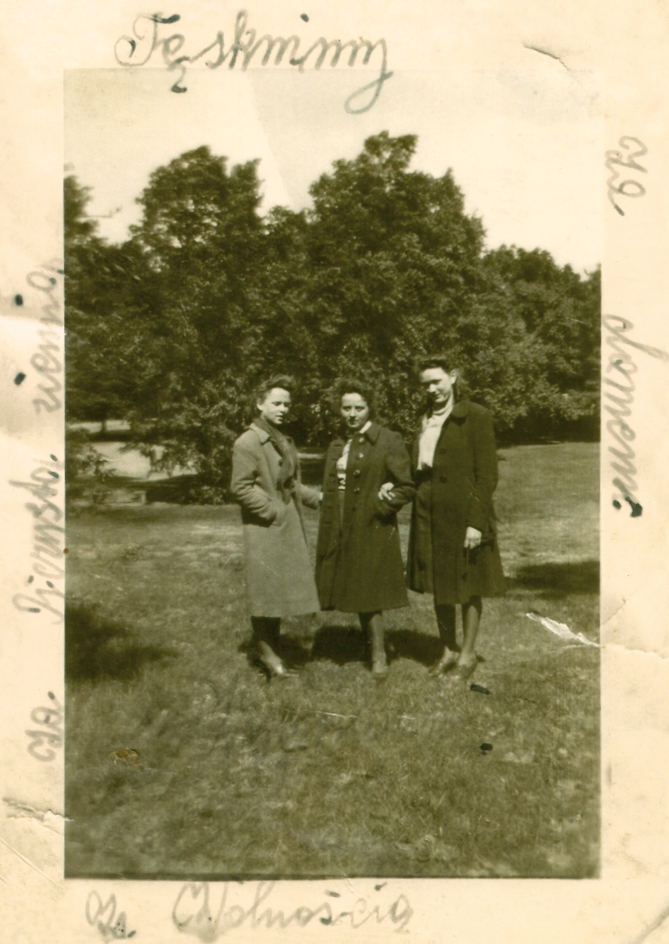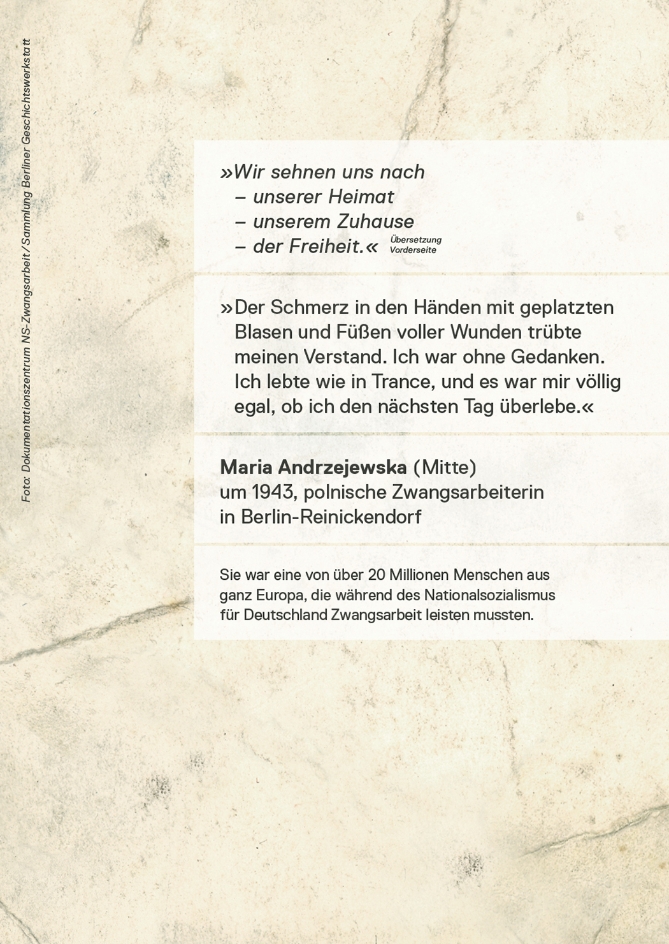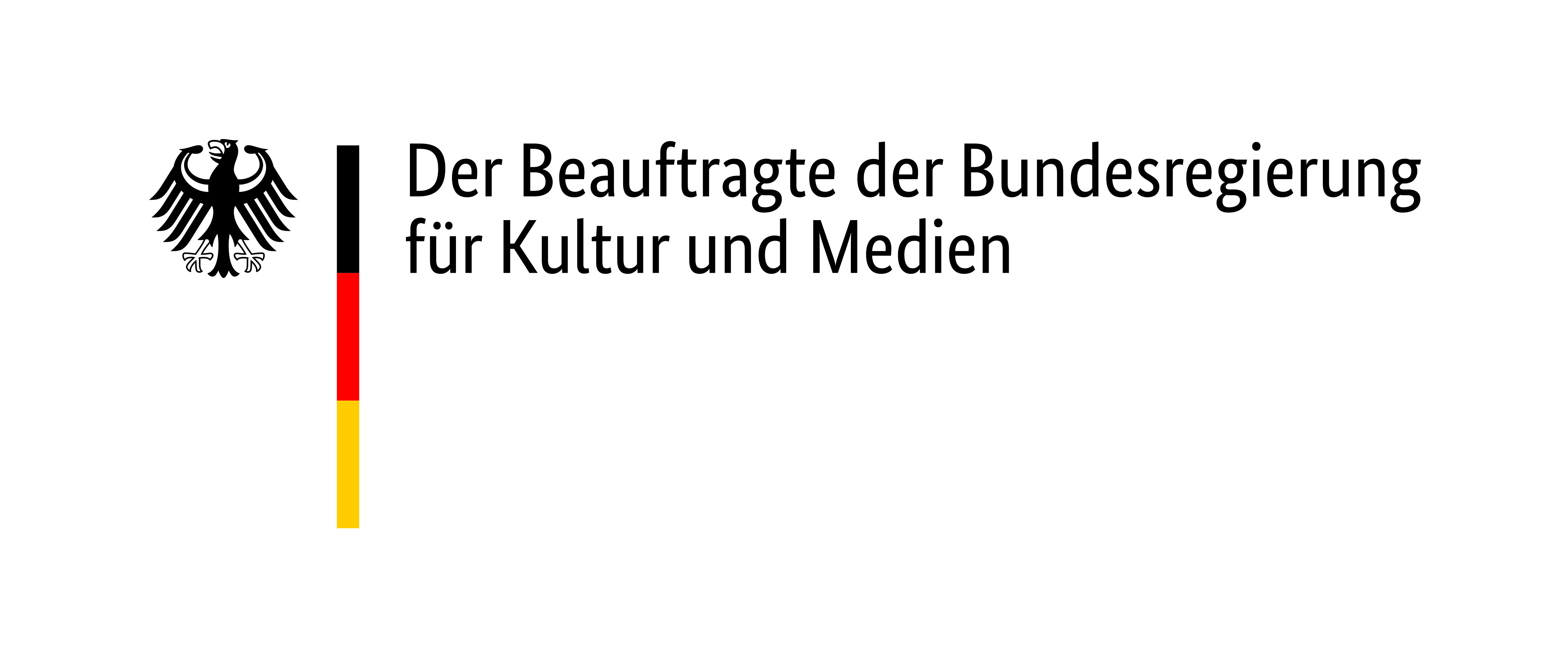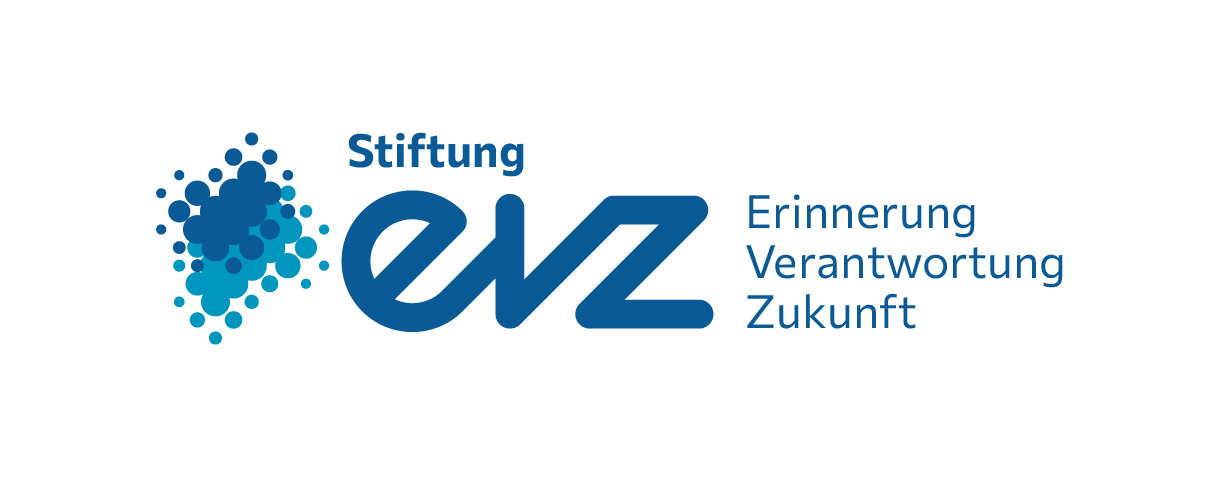

The photograph of Maria Andrzejewska and her two friends was taken in Schillerpark in Berlin-Wedding. It is not clear who took the photo. Often German photographers offer to take pictures of forced laborers for a relatively high price. Polish workers were not allowed to own cameras themselves.
In a testimonial, Maria Andrzejewska described her brief excursions to parks or to the zoo. These were rare diversions from her daily routine as a forced laborer, working in the defence industry at the Dr Klaus Gottwart company in Berlin-Reinickendorf. She wrote about her work: “We began work at 6:00 am, so the guard woke us at 4:40 am. The factory produced parts for airplanes and submarines. I worked in technical monitoring. The pay was very low. I don't remember, but I must have received 10 marks a month, which was very little.”
From 1942 onward Maria Andrzejewska had to live in a large camp at the Gottwart company. The cramped conditions, infestations, diseases, and the constant abuse and hard work took a severe toll on her. In 1944 Maria Andrzejewska attempted to flee, but she was caught by police and sent to the Fehrbellin work camp.
Work camps (Arbeitserziehungslager) were supervised by the Gestapo, and over the course of the war they increasingly served the purpose of punishing female forced laborers. Upon release, she weighed 28 kilograms due to the meagre nourishment, heavy labor, and constant punishment. She wrote about her time in the work camp: “The pain in my hands due to open blisters and my feet covered in wounds clouded my mind. I was without any thought. I lived as if in a trance, and I did not care at all whether I survived another day.” Even after being released from the camp, Maria Andrzejewska had to continue to perform forced labor.
She was one of over 20 million people from throughout Europe, who had to perform forced labor for Germany under National Socialism.




